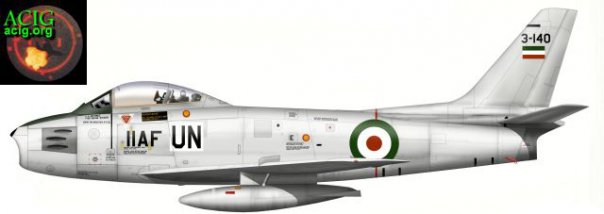The article below was first forwarded to Kavehfarrokh.com by Shahyar Mahabadi (posted originally in the IIAF website ). Kindly note that the text and picture captions below has been edited from the original version which appeared in the IIAF website.
=========================================================================
ONUC was established initially in July 1960 to ensure the withdrawal of Belgian forces, to assist the Government in maintaining law and order, and to provide technical assistance. The function of ONUC was subsequently modified to include maintaining the territorial integrity and the political independence of the Congo, preventing the occurrence of civil war, and securing the removal from the Congo of all foreign military, paramilitary and advisory personnel not under the United Nations Command, and all mercenaries. On completion of the mandate, the Mission was withdrawn in June 1964. For more on the UN’s Congo mission, see here… and here…
The Iranian Air Force played a major role in the success of the UN mission. Four F-86 Sabre fighter aircraft were deployed for the UN mission. The route of Iranian Air Force F-86 “Sabre” fighters from Iran to Congo was as follows: Dezful –Tehran- Dhahran (Saudi Arabia)-Jadeh (Saudi Arabia) -Addis a Baba (Ethiopia)–Entebbe (Uganda)–Katanga( Congo). The flight plan traversed more than 6,300 Km over a time of 10.
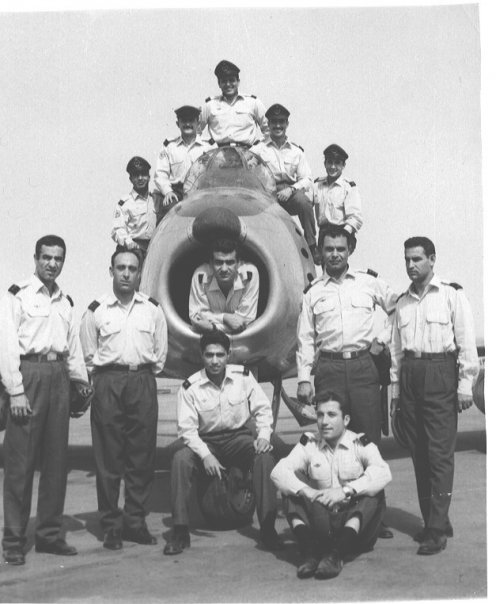 Iranian airmen and crew pose with their F-86 Sabre combat aircraft in Dezful’s Airbase in 1963 (Source: IIAF).
Iranian airmen and crew pose with their F-86 Sabre combat aircraft in Dezful’s Airbase in 1963 (Source: IIAF).
Iranian Air Force aircraft were mission-ready at all times. There were no accidents or fatalities during the mission. The one exception was one incident during which Lt. Alaghband’s aircraft was hit by a bullet the F-86 was quickly repaired and ready to fly in less than 24 hours. It is notable that the four F-86 fighters of the IIAF flew more sorties than the Philippines and Sweden who had a total of 18 aircraft.
Iranian Air Force F-86 Sabre – note “UN” insignia on above aircraft (Picture Source: acig.org).
Iran’s airmen were commended by the United Nations for their excellent performance. After returning to Iran Maj. Seyed Javadi, Major Rabii (Base Operation Commander), Lt. Mostafavi and Capt. Farywar were decorated with medals for their exemplary performance. In honor of these operations, Iranian Postal services issued a special stamp six Months after the mission on United Nation Day.
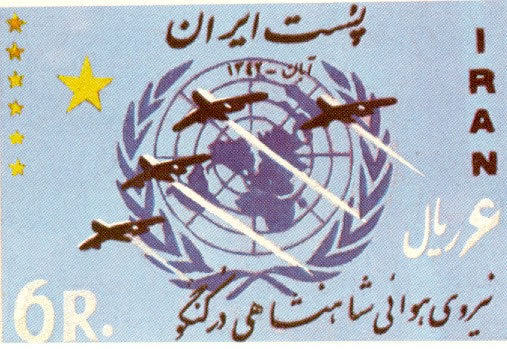 Iran’s postal services issued the above stamp in honor of the Iranian Air Force operations for the United Nations in the Congo in the early 1960s (Source: IIAF).
Iran’s postal services issued the above stamp in honor of the Iranian Air Force operations for the United Nations in the Congo in the early 1960s (Source: IIAF).
Originally, the medal awarded for service in the Congo was a UN blue and white ribbon with a bar indicating Congo service. In 1963 it was decided that a distinctive ribbon should be issued. The ribbon subsequently awarded carries a broad center band of green, symbolic of hope which was thought to be appropriate for a young nation, and also to represent the Congo Basin. The center band is flanked by two narrow white bands, representing the UN Mission and at either end are two bars of UN blue. To qualify for the medal, three months of service in the Mission were required.
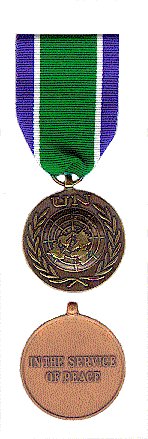 Medal issued for service for the UN in the Congo in 1962-1963 (for more on medals see here…)
Medal issued for service for the UN in the Congo in 1962-1963 (for more on medals see here…)
The Iranian Air Force crew assigned to the UN mission were: Maj. Amir Kamiabipour ” Mission Planner” Capt. Mostafa Hadj Seyed Javadi “Mission Commander“. 1St.Lt. Iradj Mostafavi (later Brig. General ) 1st. Lt Vahid Kimiagar ( Later Brig. General) 1st. Lt Mohsen Memarian (killed in Aircraft Crash) 1st. Lt Mohammad Alaghband ( Killed in Aircraft Crash) 1st. Lt Esmaeel Memari (Killed in Aircraft Crash) 1st. Lt Mohammad Abolmolouk (later Brig.General) 1st. Lt Mohammad Pezeshki (later Col.) 1st. Lt Nasser Zolali ( Later Brig.General, Died of Cancer ) 1St.Lt. Ali Akbar Farywar (later General) “commander of Support & Maintenance” and 33 maintenance and support crew (kindly forward the names of these personnel to the IIAF website as well as Kavehfarrokh.com in recognition for their services to the United Nations).
There was also a single C-47 “ Dakota” with 6 crew assigned with support duties for the UN mission. The Aircraft commander was Capt. Hessam Mirtolooi (later general). The C-47 made three sorties from Tehran to the Congo. The formidable Kilimanjaro Heights posed great challenges for the C-47 flying over them, a task which the aircraft successfully accomplished.
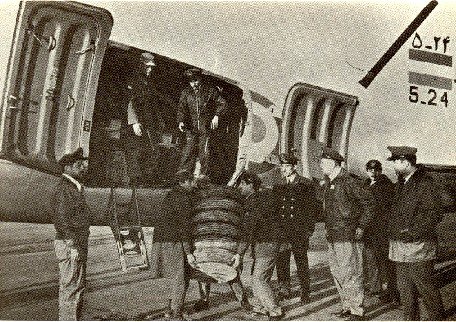 Iranian Air Force C-47 Dakota during the UN mission to the Congo (Source: IIAF). Ideal for landings in rough terrain, the venerable Dakota proved its worth in spades during and after the Second World War as a robust and reliable transport aircraft. The Dakota served in several countries decades after the conclusion of the Second World War. Numbers of the Dakota continue to fly in a number of countries.
Iranian Air Force C-47 Dakota during the UN mission to the Congo (Source: IIAF). Ideal for landings in rough terrain, the venerable Dakota proved its worth in spades during and after the Second World War as a robust and reliable transport aircraft. The Dakota served in several countries decades after the conclusion of the Second World War. Numbers of the Dakota continue to fly in a number of countries.

